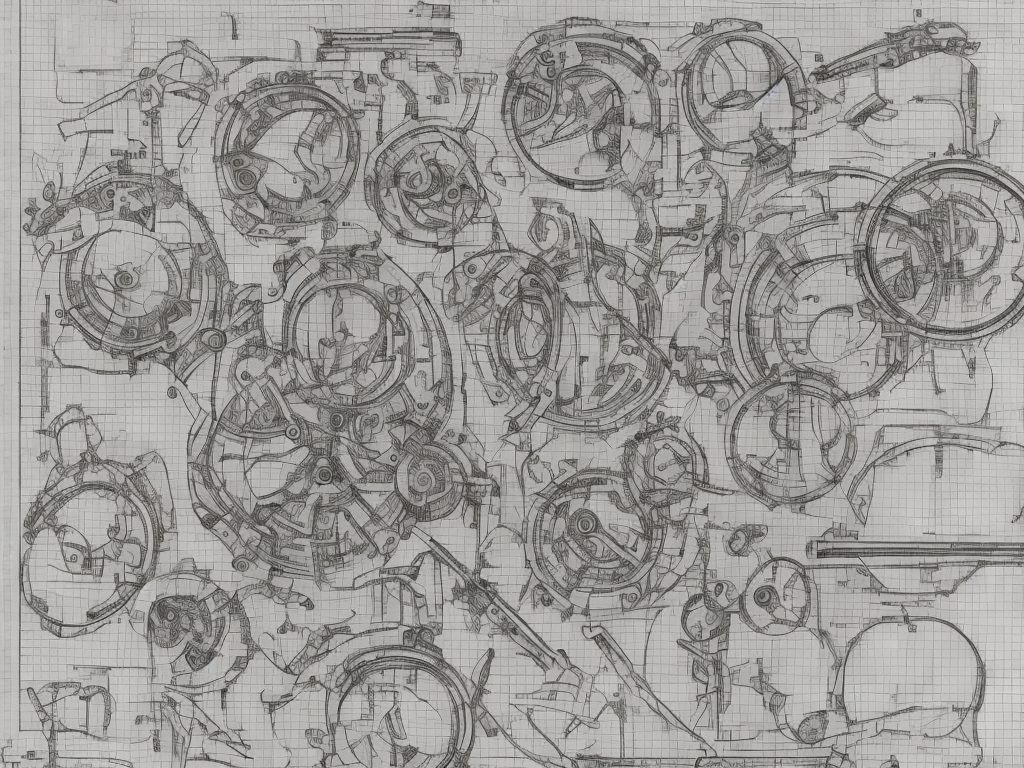
First Angle and Third Angle Projection are terms that are commonly used in engineering drawing. These terms are used to describe two different methods of projecting a three-dimensional object onto a two-dimensional plane. First Angle Projection and Third Angle Projection are used to create drawings that accurately depict the shape and size of an object, and are both used in a variety of industries, including engineering, construction, and manufacturing.
The main difference between First Angle Projection and Third Angle Projection is the orientation of the object in relation to the projection plane. In First Angle Projection, the object is placed between the observer and the projection plane, while in Third Angle Projection, the object is placed behind the projection plane.
First Angle Projection
First Angle Projection is a method of projecting a three-dimensional object onto a two-dimensional plane. In this method, the object is placed between the observer and the projection plane. The observer is imagined to be inside the object, looking outwards towards the projection plane. The observer's line of sight intersects the projection plane, resulting in a view of the object that is projected onto the plane.
The projection plane is typically a sheet of paper, and the three-dimensional object is drawn on it as a two-dimensional image. The view of the object that is projected onto the plane appears upside-down and reverse to the observer's view.
The image of the object is drawn as if it is viewed from the observer's position looking towards the projection plane. The shape and size of the object are accurately represented in the drawing, giving the viewer a clear understanding of the object's dimensions and proportions.
First Angle Projection is commonly used in Europe, Russia, Australia, and parts of Asia. This method is used in countries that follow the International Organization for Standardization (ISO) standards, which includes the United Kingdom.
Third Angle Projection
Third Angle Projection is a method of projecting a three-dimensional object onto a two-dimensional plane. In this method, the object is placed behind the projection plane, with the observer looking through the object towards the projection plane. The observer's line of sight passes through the object and intersects the projection plane, resulting in a view of the object that is projected onto the plane.
The projection plane is typically a sheet of paper, and the three-dimensional object is drawn on it as a two-dimensional image. The view of the object that is projected onto the plane appears in the same orientation as the object's position relative to the projection plane.
The image of the object is drawn as if it is viewed from the observer's position looking through the object towards the projection plane. The shape and size of the object are accurately represented in the drawing, giving the viewer a clear understanding of the object's dimensions and proportions.
Third Angle Projection is commonly used in the United States, Canada, and parts of Asia. This method is used in countries that follow the American National Standards Institute (ANSI) standards, which includes the United States.
Comparison of First and Third Angle Projection
There are several differences between First Angle Projection and Third Angle Projection. The main difference is the orientation of the object in relation to the projection plane. In First Angle Projection, the object is placed between the observer and the projection plane, while in Third Angle Projection, the object is placed behind the projection plane.
Another difference between the two methods is the way in which the object is represented in the drawing. First Angle Projection produces an image that is upside-down and reverse to the observer's view, while Third Angle Projection produces an image that is in the same orientation as the object's position relative to the projection plane.
The orientation of the object also affects the placement of the views on the drawing. In First Angle Projection, the front view is placed in the lower-left corner of the drawing, while in Third Angle Projection, the front view is placed in the lower-right corner of the drawing.
In addition to these differences, there are also differences in the way in which the dimensions of the object are represented. In First Angle Projection, dimensions are taken from the projection plane to the edges of the object, while in Third Angle Projection, dimensions are taken from the projection plane to the center of the object.
Usage of First and Third Angle Projection
The choice between First Angle Projection and Third Angle Projection is typically made based on the standards used in a particular country or industry. For example, countries that follow the ISO standards typically use First Angle Projection, while countries that follow the ANSI standards typically use Third Angle Projection.
In some cases, companies may choose to use a particular method based on their specific needs. For example, if a company has existing drawings that use First Angle Projection, they may choose to continue using that method for consistency.
Conclusion
First Angle Projection and Third Angle Projection are two different methods of projecting a three-dimensional object onto a two-dimensional plane. The main difference between the two methods is the orientation of the object in relation to the projection plane, with First Angle Projection placing the object between the observer and the projection plane, and Third Angle Projection placing the object behind the projection plane.
The choice between the two methods is typically made based on the standards used in a particular country or industry, with countries that follow the ISO standards typically using First Angle Projection, and countries that follow the ANSI standards typically using Third Angle Projection. In some cases, companies may choose to use a particular method based on their specific needs or for consistency with existing drawings.
 Self-Instruct
Self-Instruct